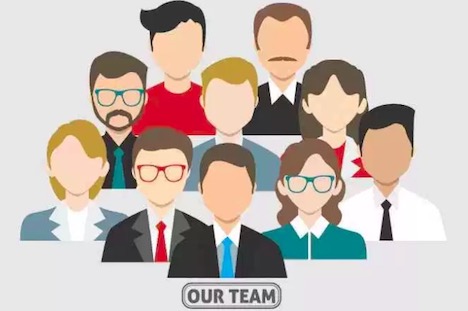How to Improve Leadership Communication – 9 Proven Tips
Leadership can be described as the ability of one person to motivate one or more others to change behavioral patterns and or to collaborate for a common purpose. Arguably, the most prominent means a leader has to influence others is the ability to communicate effectively with those in his or her charge.
In fact, one could argue that communication is the bloodline of an organization. It is the juice by which all business enterprises operate. If so, the ability to communicate effectively would be an imperative for any leader that wishes to lead his follower-subordinates well.
This hub presents some tips on how to improve leadership communication. Accordingly, this brief discussion on how to enhance leadership communication includes thoughts about…
1. Maintaining Personal Integrity
The first tip on how to improve leadership communication goes to the leader’s personal integrity. Integrity is a positive moral-ethical characteristic that describes to what extent a person’s words and actions align with each other. When a corporate leader demonstrates integrity, he or she has a better chance to gain the trust of others than if he or she is deceptive and manipulative.
It can be argued that communication lines flow most freely in an environment based on trust. Individuals and groups of individuals are more apt to listen to what another person or group has to say if they trust them. If follower-subordinates do not trust their organizational directors, then the subordinate-followers will be less likely to give those directors their full attention and best effort. In many societies including the USA, trust is earned through consistent positive actions that demonstrate integrity.
2. Demonstrating Keen Awareness and Foresight
Two more related characteristics leaders need to demonstrate to improve leadership communication is a combination of awareness and foresight. Whether an organization is a new venture or has been long established, organizational leaders can gain the ear of their follower-subordinates if they demonstrate a mastery of the business and the environment in which it operates. Employees want to know that the leader knows his stuff. Subordinates will more readily follow their supervisors, if those supervisors can show they possess the relevant knowledge and skillsets.
Awareness speaks to a leader’s understanding of the prevailing environment both within and outside the organization. Foresight refers to the corporate or department director’s ability to see how decisions today will likely impact the organization both in the near term and the future. Employees are more apt to receive communications from their director-supervisors, if they perceive that the leader director knows what he or she is taking about.
3. Show Respect and Care for All Members and Stakeholders
A third tip on how to improve leadership communication relates to the extent to which leader-supervisors’ show respect and care for other members of the organizations, such as employees, peers, etc.. Integrity and competency in knowledge and skills help build two sides of what could be regarded as a triangle of trust (personal and professional). The third side could be labeled people or people orientation. Follower-subordinates at all levels of an organization are more apt to listen if their leader-supervisors show respect and care for them. As John Maxwell often quotes “They will not care what you know until they know how much you care.” Likewise employees will not respect their bosses if those bosses do not respect their employees.
4. Recognize the Value of All Members of the Organization
A fourth tip on how to improve leadership communication is the leadership members must recognize the value of each member of the organization. This point is related to the one above it, but is slightly different. It is possible to demonstrate respect and care for employees as human beings without actually seeing them as valuable to the current organization.
In the early 1980s, I worked for a small Japanese American who would openly invite his employees over to his home for dinner; and yet treat them horribly at work. To him, work was work and down time was down time and he could separate the two. However, his negative demeanor at work did not in any way show that he valued his employees’ contributions to the organization. Thus, communication lines were strained and miscommunication was a common occurrence. To improve communication, leader-supervisors must show each member of their staffs that they are valuable to the success of their respective organizations.
5. Include Other Members in the Decision-Making Process
Another tip on how to improve leadership communication is to allow members from all levels of the organization to participate in the strategy and decision-making processes. This ahs been referred to as Participative Leadership. Employee-subordinates will realize that their leaders value them as skilled and concerned members if those leaders openly recognize that those same employees have valuable knowledge and insight to share with the whole organization.
Unless they personally built their current organization from the ground up and participated in every type of its activities, most leaders lack all the necessary information to make thoroughly informed decisions about the future of the organization. They need the eyes and ears of all members to adequately access past and present activities as well as future opportunities. Organizational directors and business executives can improve leadership communication by formulating an organizational culture that is conducive to the free flow of ideas from all corners and levels of the enterprise.
6. Practice Active Listening
A sixth tip on how to improve leadership communication is for all members (most especially the leaders) to learn the art of active listening. Active listening is the process of paying careful attention to others when they are attempting to share their lives and hearts. Active listening demonstrates the extent to which leader-supervisor’s actually respect and care for their employee-subordinates. Moreover, listening intently to the followers and their ideas shows how much their leaders value them.
So what is active listening? In their book Managing Cultural Differences Philip Harris, Robert Morris, and Sarah Morris wrote described active listening as follows:
- The listener pays careful attention and in essence becomes involved with the speaker
- The actions of the listener demonstrate a respect and concern that words alone cannot fully express
- The demeanor of active listening diminishes the magnitude of problems and gives the speaker a sense of already accomplishing something
- The listener provides feedback to the speaker concerning the clarity of the intended message
- If the listener does not fully understand the message, then the listener asks clarifying questions until he or she understand as much as possible the message that the speaker is attempting to convey
Communication is a two way street if leaders want to improve communication they must learn to listen in a way that follower-subordinates feel respected and heard.
7. Able to Articulate a Compelling Vision Using Vivid Mental Models
A seventh tip on how to improve leadership communication is the leader needs to hone his or her skills to articulate a compelling vision. In the Bible, one writer wrote “Everyone should be quick to hear and slow to speak.” In the six previous tips, I discussed the character of leaders as well as the attitudes of leaders toward follower-subordinates including active listening. Still, a time will come when the leader must speak. And, he or she must be able to articulate a vision that is compelling; so compelling that followers are motivated to accomplish the challenges they face as a corporate entity and as individuals.
Winston Churchill became well known for his one liners that seemed to move his British compatriots to incredible feats in the face of overwhelming odds. In the prologue of the book The Last Lion, the author pens a vivid sketch of the painstaking process Churchill used to craft each of his speeches. He spent hours to hone narratives that took mere minutes to deliver. Few can speak eloquently in an impromptu setting. Communication is enhanced when organizational directors take adequate time to carefully choose their words in order to craft a compelling vision.
Communication is enhanced further when the message or vision is shared through vivid mental models. The more clearly followers can picture the vision in their heads the more apt they are to grasp on to it and run with it. To improve leadership communication, leaders need to articulate compelling visions in a manner in which their subordinates can see what that future will actually look like.
This means that the pictures leaders choose to employ must be recognizable and motivating to the followers to whom the pictures are conveyed. Understanding what mental models will be comprehensible to a given set of followers goes back to the extent to which leaders have come to know their followers through active listening.
8. Communicate the Vision Consistently and Often
Another tip on how to improve leadership communication is to communicate the vision consistently and often. Rick Warren currently leads one of the most effective churches in Southern California. His ministry has trained over 400,000 pastors around the world in the past 30 years. In his book Purpose Driven Churches, Warren suggested that vision and or core values must be reiterated every 26 days in order to keep the organization on track with its stated vision and purpose. Leaders can enhance their communication by placing the vision before their people’s eyes more frequently and consistently.
9. Iconic Stories, Symbols, and Wall Hangings
Finally, leadership can improve communication through alternative means of conveying the message. The more senses leaders can involve in the communication process the more apt they will be to capture the attention of every member of their organization. Individuals have different personalities and thus respond to messages and types of messages in different ways. Some respond to rah rah pep rallies; others respond to vivid stories; still others are moved by iconic logos, or simple emails. For some a simple poster in the cubicle or department wall will drive them. Communication within a business enterprise or organization can be improved by assimilating a wide spectrum of communication tools or mediums.
Tags: entrepreneurship, how to, leadership



















































